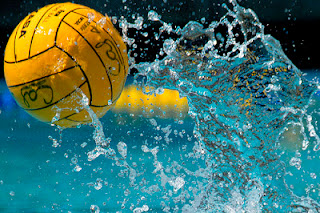Two things stand out about spending an hour on the phone with Billy Mills. First, I wanted to write down everything he said, because he doesn't spend a lot of time with "chit-chat." Every sentence has thought and meaning behind it, and I didn't want to miss a word. After the 40-minute formal interview, we simply talked about track for another 20, during which time he made my entire year.
 |
| Billy Mills today - looking quite youthful for a man in his 70's |
Speaking of the marathon he ran at the Rome Olympics soon after his historic win in the 10,000 meters, he talked about the dehydration which got the better of him and how he faltered from 3rd to "about 14th" in the final three miles. I mentioned that one of my former track runners, actually Donchelle Florence from Denbigh H.S. here in Newport News, VA, was getting ready to run the Los Angeles marathon, and I had told her that she needed to stop at every water station, whether she felt thirsty or not. Mills reflected for a moment, and came back with a line I'll never forget. "I should have taken your advice Jim. If I had, I would have won that day."
Here's an excerpt from our interview from Trackside Magazine. To see the second half, please click the link below for direct access to the magazine.
TIME STANDS STILL - BILLY MILLS
By
every definition of the words, Billy Mills is an American legend and hero. In
1964, Mills stunned the sporting world by dramatically coming from behind on
the final lap to win the Olympic 10,000 meter run in Tokyo with a world record
time of 28:24. His life and Olympic triumph were the inspiration for the 1983
movie “Running Brave,” starring Robby Benson. To date, he is the only American
in history to win the event.
Now
75, Mills has used his Olympic fame to help countless others. An American
Indian, and member of the Lakota tribe, Mills has advanced the causes of Native
Americans and citizens worldwide. Currently, he serves as the spokesperson for
Running Strong for American Indian Youth, an organization which supports
projects that enhance Indian causes. Running Strong serves as a project of Christian Relief Services Charities. For
his work as an advocate, speaker and author, President Barack Obama awarded
Mills with the Presidential Citizens Medal in February 2013.
Mills
is a member of several athletic Hall of Fames, including those of the U.S.
Olympics, National Track, Distance Running, Kansas, San Diego and his
birthplace, South Dakota. He is based in the Sacramento, CA area, but continues
to travel the country, meeting with youth groups and sponsoring events on
behalf of Running Strong.
He
has been married to wife Patricia for 51 years. She is an accomplished artist
whose work can be found on her website at www.studiotupos.com.
TrackNation: Did you realize the type of cultural
impact that you would have after winning the gold medal in 1964?
Mills: I didn’t realize the type of impact it would
have. At the time, I was just trying to find my place in the world. Society was
going through multitudes of changes. We had grown up with Plessy v. Ferguson
(1896 Supreme Court decision which upheld segregation under the doctrine of
“separate but equal”) and it wasn’t repealed until Brown vs. Board of Education
(1954). This had an effect on the existing treaty rights for Indians and the
government was trying to take away a lot of the sovereignty we had. I just
didn’t feel like I belonged. In fact, I tried to commit suicide as a junior in
college (at Kansas) and didn’t tell anyone for many years. Really, I was just trying
to find out how I fit in this complex world.
TrackNation: How does one make the transition?
Mills: Through bravery and fortitude. Also, there
are two separate virtues and you have to decide how to use those virtues.
First, there is wisdom which will empower you. Then there is generosity which
will allow you to empower others. That’s what I had to have to step on that
track in Tokyo on October 14th,
1964 at 4:30 in the afternoon. I felt like that moment was a gift.
Years before that, my Dad and I were fishing and he
told me something that was a great surprise at the time. He said, “Son, you
have broken wings. But I’ll share these words with you and you’ll have the wings
of an eagle. He said, look beyond the hurt and the hate. You have hate because
people have hurt us. But you don’t see the good in people. It is the pursuit of
a dream that will heal you.”
TrackNation: Now the eagle has become a tremendous
symbol of your story. Could you share some thoughts on this?
To read the rest of the Billy Mills "Time Stands Still" article, please click here and turn to page 40:
TrackSide Magazine
To read the rest of the Billy Mills "Time Stands Still" article, please click here and turn to page 40:
TrackSide Magazine









